Click to view our Accessibility Statement or contact us with accessibility-related questions













What is SpaceFN and why you should give it a try

search
close
Sort by: Newest
keyboard_arrow_down
thepappas
0
Jun 29, 2024
I would (and do, though I use a Corne) add that a lefthand numpad would fit nicely here too.
Edit: I get fast repeats on space & enter on my setup (both are layer keys) with a double-tap-hold.
(Edited)

mouse_md
16
May 23, 2024
Or you could simply get rid of the giant, unnecessarily large spacebar to make room for more modifier keys.
So long as you know home row, there's no reason to have any spacebar that extends past the V and N keys. Unless you have some kind of disability, your thumbs can't rest comfortably beyond that range when your hands are on home row. So the spacebar should be 3u.


(Edited)
Why.Me
5
May 3, 2024
Or accept split space as your lord and savior, sacrifice nothing. Spacefn goes right out the window with games 99% of the time. Professionally (office setting) it's totally viable of course.

dovenyi
77
May 4, 2024
Why.MeDepends on the game ofc, but I can't see how a split spacebar can have anything to do with SpaceFN. I use six thumb keys and think that split spacebars should be mandatory on every keyboard, but would use SpaceFN anyway with the added benefit of extra layers. Fun fact: one of the most popular Alice kits on the market, with split spacebar of course, is incapable of any layer functions.

Vik_r_am
47
Keyboard Club Member
May 3, 2024
Absolutely the most useful feature on all my qmk/via boards, and thanks to your article, I can now use this on all keyboards! Great stuff!
Clarid
156
May 3, 2024
This made my brain do a happy little backflip because I’ve been doing this for years and never caught on that others were doing it. It just makes sense, especially on compact layouts. A 60% was the first programmable keyboard I bought, HATED the sheer lack of functionality, and quickly thought to turn WASD into a layered arrow cluster in just about an identical way here with Home and End on Q and E respectively.
Only problem I have with this placement is that it still introduces disruption to placement of the right hand if it’s on the mouse, which is why I chose WASD. Right hand on mouse *always* while navigating in games/documents means you're not breaking flow to frequently return your hand to the mouse. Potentially controversial take: Right-hand arrow and numpad placement made sense BEFORE the mouse, but once the mouse came into standard use, those things should have swapped to the left side of the alpha cluster.
Clarid
156
May 4, 2024
It's definitely understandable that I'm an outlier on the lefty opinion, haha. It was absolutely born from finding issue with taking my hand off the mouse during gaming to access keys on the right side of the keyboard. I've become covetous of split spacebar keyboards (using a Skyloong GK75 currently) so I can still game while having an FN key nearby. I played D2 with friends for a good few years and being able to quickly emote at something (my favorites were pointing at dumb things while speaking or pulling out a broom to clean up a mess lol) and still react if needed were wonderful since I didn't have to rebind anything or deal with games that didn't map WASD for menu navigation. That's really where it's at for me in most games.
I'm glad I caught the promo for your article in a "look at what we're selling" email from Drop. No idea if I can subscribe or get notified when you and a few others I enjoy post articles, but I'm going to figure it out so I can make sure to catch anything interesting in the future. Thanks for your effort in sharing these things with others <3

dovenyi
77
May 4, 2024
ClaridNot sure about the subscription but I'll post here in the first days of each month, mostly about keymap and logical layout design stuff. These are going to be condensed/shortened/merged versions of similar posts published over at kbd.news so readers there and subscribers to my RSS or newsletter will be notified.
PRODUCTS YOU MAY LIKE
Trending Posts in Mechanical Keyboards

RealRage_TV
software?
Hi I'm new to Drop and i just received my Keyboard i have been waiting for months for by Drop x MTN Dew x Borderlands movie and didn't know if there was a software like Logitech's for the keyboards. if anyone could help please let me know
Nov 20, 2024

jdsvdropper
Drop ENTER keyboard with DCX Sleeper Mac variants and Rocky Bird
Black Drop ENTER keyboard with DCX Sleeper Mac variants for the Option and Command keys, and Rocky Bird red and black DCX keycaps.
Nov 19, 2024
AngryTank
Favorite Artisans
COME FORTH SHENRON!
Purple, Dragon Balls, and Seta! What more does a simple man need?
Nov 17, 2024
InsufferablePedant
ZealPC Aqua Zilents
Please ignore the filthy keyboard, it's been on a shelf for a minute.
Nov 15, 2024

Neekolas714
Kicks & Keebs
Alpha Bravo Smoke
Finally finished my Keychron V5. Smooth, beautiful and stylish. What else could there be?
Nov 13, 2024


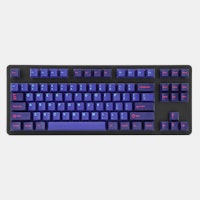
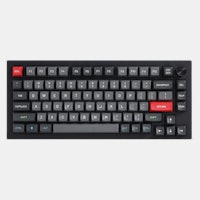
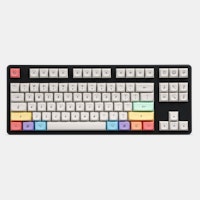
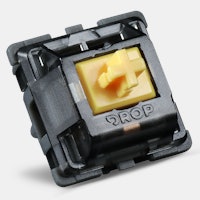

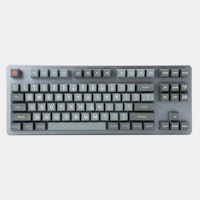
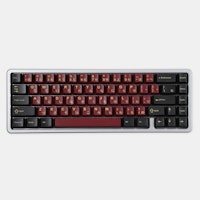
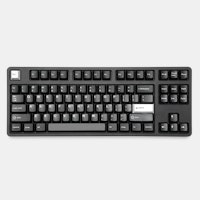
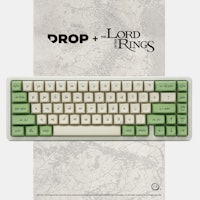








On my imaginary top list of the most useful keyboard features, tweaks and hacks, SpaceFN would deserve a podium finish for sure. But what makes it so special? I will list its benefits below, but can state right at this point that the SpaceFN concept, setting up your space key as a layer switch when held, is clearly one of the most useful tweaks in the keyboard hobby. Why? How? Let me explain it so you can start boosting your productivity right away. If you already use it, you may read this article as a self-justification. If you heard about SpaceFN but haven't tried it yet, let me convince you and show you some implementations. And if you're not sure about what SpaceFN is, read this write-up because it may change your life - well, at least that part you spend in front of monitors. ...and believe me, running a blog called kbd.news makes it pretty much unavoidable to get and test new keyboards every week. Loosely recreating my custom keymap and being able to use an additional SpaceFN layer is crucial, especially when I have to revert to the standard layout and horizontal staggering after using split keyboards. Well, as a matter of fact, I don't even have to set up SpaceFN in this case. Because I find it so essential that a handy tool is running on my PC taking care of this for me, automatically. I do think it would be a real blunder if you missed this incredible feature, so do yourself a favor and read on. SpaceFN history Of course I'm not the one who came up with this concept. The first useful post on the subject I came across was probably this geekhack thread by spiceBar, from 2013, advocating this layout:
KMonad is there for Linux (with the recommendation of Matthias Goffette). Example layout So you’ve set up SpaceFN in Via/VIAL/QMK. Well done. The original idea back in 2013 materialized as a semi-standardized SpaceFN layer. Still, I like to call it a concept, because as already told, you can and should put whatever you want on your SpaceFN layer.